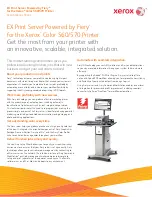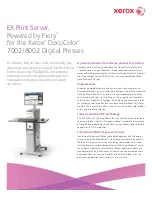
16
BladeSymphony 1000 Architecture
White Paper
www.hitachi.com
SMP Configuration Options
BladeSymphony 1000 supports two socket (four-core) Intel Itanium Server Blades that can be scaled to
offer up to two 16 core servers in a single chassis or eight four core servers, or a mixture of SMP and
single module systems, thus reducing footprint and power consumption while increasing utilization and
flexibility. SMP provides higher performance for applications that can utilize large memory and multiple
processors, such as large databases or visualization applications.
The maximum SMP configuration supported by BladeSymphony 1000 is:
• Four Dual Core Intel Itanium Server Blades for a total of 16 CPU cores
• 256 GB memory (64 GB per server blades x 4)
• Eight gigabit NICs (2 on-board per server blade) connected to two internal gigabit Ethernet switches
• Eight PCI-X slots (or 16 PCI-X slots with chassis B)
With its unique interconnect technology, BladeSymphony 1000 delivers a new level of flexibility in
adding computing resources to adapt to changing business needs. BladeSymphony 1000 can address
scalability requirements by scaling-out (horizontally), or by scaling-up (vertically). Scaling out is ideally
suited to online and other front-end applications that can divide processing requirements across
multiple servers. Scaling out can also provide load-balancing capabilities and higher availability through
redundancy.
Figure 7. Scale-up capabilities
Scaling up is accomplished through SMP, shown in Figure 7. This approach is better suited to
enterprise-class applications requiring 64-bit processing, high computational performance, and large
memory addressability beyond that provided in a typical x86 environment. BladeSymphony 1000 SMP
Interconnect technology and blade form factor allow IT staff to manage scale-up operations on their
own, without a service call. The interconnect allows up to four server blades to be joined into a single
server environment composed of the total resources (CPU, memory, and I/O) resident in each module.
NUMA Architecture
The Intel Itanium Server Blade supports two memory interleave modes, full and non-interleave.
In full interleave mode, the additional latency in accessing memory on other server blades is averaged
across all memory, including local memory, to provide a consistent access time. In non-interleave
mode, a server blades has faster access to local memory than to memory on other server blades. Both
of these options are illustrated in Figure 8.
4-way
Server
SMP Interconnect
Backplane
SMP Interconnect
Backplane
16-way
Server
8-way
Server
OS
OS
OS














































